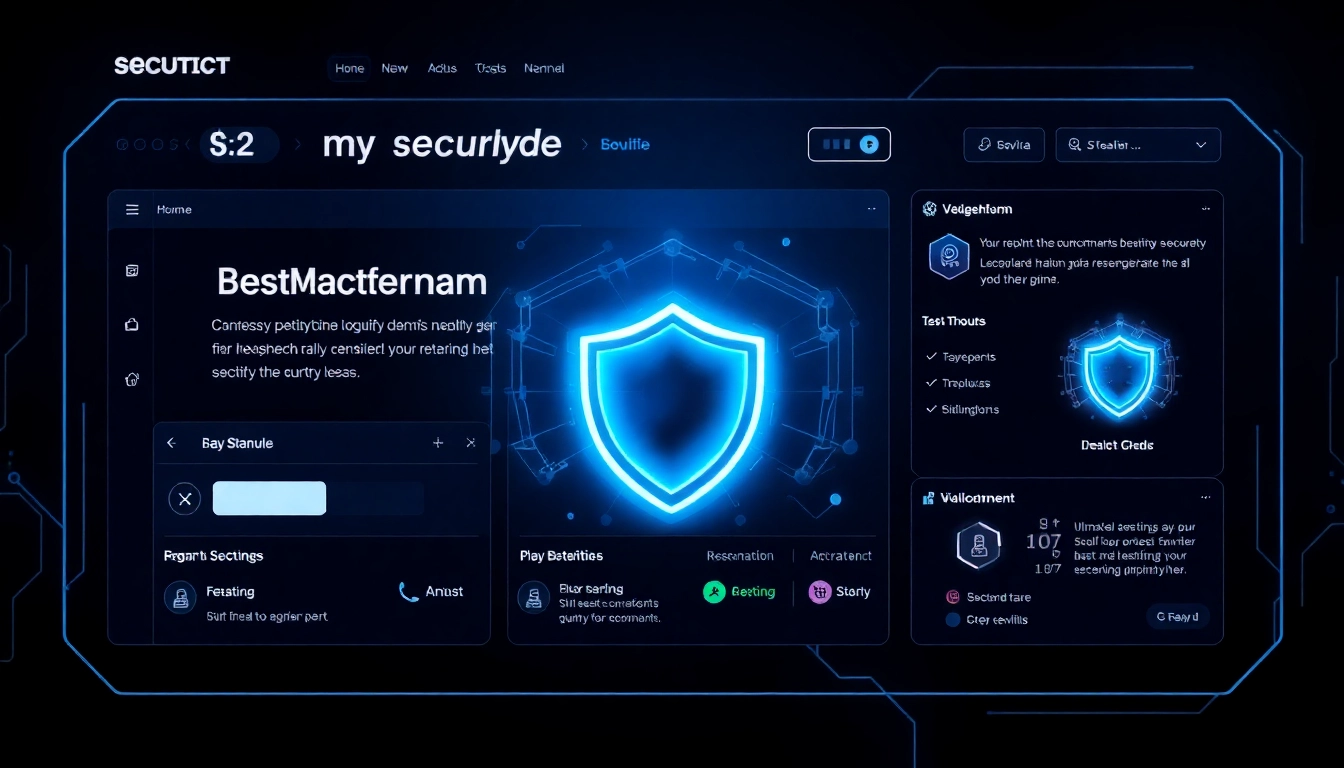Understanding CS Teste: The Basics of Game and Network Testing
In the competitive world of online gaming, especially titles like Counter-Strike, performance consistency and minimal latency are crucial for achieving victory. To optimize gaming experiences, players and service providers alike utilize specialized tools known as cs teste—testing solutions designed to assess network reliability, latency, and overall game stability. Understanding what CS Teste entails and how it can significantly improve gameplay is essential for gamers aiming to elevate their performance.
What is CS Teste and Why It Matters for Gamers
CS Teste refers to a suite of testing methods and tools used to evaluate network and game performance specifically for Counter-Strike and similar multiplayer games. These tests measure key parameters such as ping, packet loss, jitter, and server response times, providing valuable insights into network health and stability. For competitive players, even a few milliseconds of delay can determine the outcome of a match. Therefore, employing rigorous testing ensures an optimized environment, reducing lag and enhancing in-game responsiveness.
Additionally, CS Teste is vital for server administrators and internet service providers (ISPs) aiming to deliver consistent gaming experiences. By continuously monitoring network conditions through CS Teste, they can identify bottlenecks, resolve connectivity issues, and ensure players enjoy smooth gameplay, especially during peak usage hours.
Key Features of Effective CS Teste Tools
Effective CS Teste tools possess several core features that make them indispensable for gamers and network administrators:
- Real-time Latency Monitoring: Track ping fluctuations during gameplay to detect irregularities.
- Packet Loss Detection: Identify data transmission issues that cause lag or disconnections.
- Jitter Measurement: Measure the variability in packet arrival times, impacting game fluidity.
- Server Performance Metrics: Evaluate server response times and stability from different regions.
- Multiple Server Testing: Compare performance across various servers and regions to identify optimal connections.
- User-Friendly Interface: Simplify complex data to actionable insights for both technical and non-technical users.
Some advanced tools incorporate AI and machine learning to predict potential issues before they impact gameplay, providing proactive solutions.
Common Challenges When Performing CS Teste
Despite its benefits, conducting accurate CS Teste presents several challenges:
- Network Variability: Congestion or fluctuations in internet traffic can produce inconsistent results, making it difficult to isolate real issues.
- Server Distribution: Limited server locations can restrict testing options, especially for players in remote regions.
- Hardware Limitations: Outdated routers and network equipment may skew test data, highlighting issues that are rooted in hardware rather than network infrastructure.
- Latency Fluctuations: Variability in ping readings over short periods can obscure true network conditions.
- Time-Consuming Analysis: Gathering and interpreting large volumes of data requires expertise and patience.
Addressing these challenges involves selecting reliable testing tools, performing tests during consistent network conditions, and analyzing trends over time rather than isolated measurements.
Implementing CS Teste for Improved Game Performance
Step-by-Step Guide to Conducting Accurate CS Teste
To maximize the benefits of CS Teste, follow a structured approach:
- Identify Your Goals: Determine whether you aim to reduce ping, avoid packet loss, or select the best server region.
- Select Appropriate Tools: Use dedicated software or services such as PingPlotter, Speedtest, or specialized gaming network testers.
- Conduct Baseline Tests: Measure current network conditions during typical gaming periods.
- Test Across Different Regions and Times: Gather data at various times and from multiple servers to identify patterns.
- Analyze Results: Focus on consistent issues like high ping spikes or packet loss occurrences.
- Implement Optimizations: Adjust server choices, upgrade hardware, or contact your ISP if necessary.
Repeating these steps regularly helps identify recurring problems and measures the effectiveness of implemented solutions.
Best Practices for Network Latency and Ping Optimization
Optimizing your network parameters is crucial for superior gaming performance. Consider these best practices:
- Use Wired Connections: Ethernet cables provide more stable and lower latency connections than Wi-Fi.
- Close Background Applications: Shut down unnecessary programs consuming bandwidth during gaming sessions.
- Choose the Nearest Server: Select servers geographically closer to your location for reduced latency.
- Configure Quality of Service (QoS): Prioritize gaming traffic on your router settings to minimize lag.
- Upgrade Network Hardware: Invest in high-performance routers and modems compatible with your internet plan.
- Schedule Tests During Off-Peak Hours: Conduct tests when network congestion is minimal for accurate results.
Implementing these practices consistently can significantly reduce ping times, ensuring a smoother gaming experience.
Tools and Software to Enhance Your CS Teste Experience
There exists a variety of tools tailored for network testing in gaming environments:
- PingPlotter: Visualizes ping and packet loss over time with detailed graphs.
- Speedtest by Ookla: Checks internet speeds and latency with regional server options.
- Netlimiter: Allows you to set bandwidth limits and monitor network traffic.
- WinMTR: Combines ping and traceroute functionalities for comprehensive analysis.
- Specific Gaming Network Testers: Platforms like CSInspect or server-based ping tools tailored for CS2 and other multiplayer games.
Using these tools regularly enables players to monitor their network health proactively and troubleshoot issues efficiently.
Analyzing Results and Improving Your Gaming Setup
Interpreting CS Teste Data for Better Performance
Raw data from CS Teste must be carefully analyzed. Focus on key indicators:
- Ping: Aim for consistently low ping values, ideally below 50ms for competitive play.
- Packet Loss: Zero or minimal packet loss is optimal; high packet loss indicates unstable connections.
- Jitter: Low jitter ensures steady gameplay; high jitter causes unpredictable lag spikes.
Tracking these metrics over time helps identify whether issues are temporary or persistent, guiding effective troubleshooting.
Adjusting Settings Based on Test Outcomes
Based on test results, players and network administrators can make targeted adjustments:
- Switch Servers: Connect to regions with lower latency and less packet loss.
- Optimize Router Settings: Enable QoS, update firmware, and prioritize gaming devices.
- Upgrade Internet Plan: Consider higher bandwidth plans to reduce congestion.
- Hardware Improvements: Replace outdated routers or modems that may introduce latency.
Implementing these changes can markedly improve in-game responsiveness and reduce frustration caused by lag.
Advanced Tips for Competitive Gaming Readiness
For professional or highly competitive gamers, additional measures include:
- Using dedicated gaming VPNs to route traffic through low-latency servers.
- Configuring custom DNS settings to reduce lookup times.
- Employing packet prioritization protocols for critical game data.
- Engaging in regular hardware upgrades to minimize internal bottlenecks.
Combining these expert strategies with diligent CS Teste practices establishes a performance edge in high-stakes matches.
Popular CS Teste Variations and How to Use Them
Testing Different Servers and Regions
One of the fundamental applications of CS Teste is evaluating connectivity across multiple servers and geographic locations. By systematically testing from various regions, players can identify the server with the best ping and stability, which often leads to a noticeable improvement during gameplay. For example, testing from North America versus Europe can reveal regional disparities and guide server selection for optimal experience.
Comparing Results: Free vs. Paid Testing Solutions
While free tools are accessible and straightforward, paid solutions often offer more detailed analytics, historical data tracking, and customized testing options. For players serious about competitive gaming, investing in advanced testing software can provide deeper insights, predictive analytics, and real-time alerts, enabling proactive management of network issues.
Real User Experiences and Case Studies
Numerous gamers report that implementing regular CS Teste routines resulted in significant reductions in lag and improved match consistency. For instance, a professional team utilized network testing and hardware upgrades based on their test data, leading to a wins rate increase during tournaments. Such case studies underscore the tangible benefits of systematic network performance evaluation.
Future Trends in CS Teste and Network Optimization
Emerging Technologies in Gaming Network Testing
The next generation of CS Teste tools incorporates AI-driven analytics for predictive troubleshooting, machine learning algorithms for dynamic traffic routing, and real-time network health dashboards. These innovations enable gamers to anticipate issues before they manifest, maintaining peak performance.
Integration with Cloud and AI Solutions
Cloud-based testing platforms facilitate seamless data sharing and remote monitoring, making large-scale testing more accessible. When combined with AI, these systems can suggest personalized optimization strategies, automate server switching, and even adjust in-game network settings dynamically based on ongoing assessments.
How to Stay Ahead in the Competitive Gaming World
Staying competitive requires continuous learning and adaptation. Regularly utilizing CS Teste, embracing new technological developments, and maintaining optimized hardware and internet connections are key strategies. Participating in beta testing of emerging tools and engaging with gaming communities can further enhance your understanding and readiness for future challenges.



